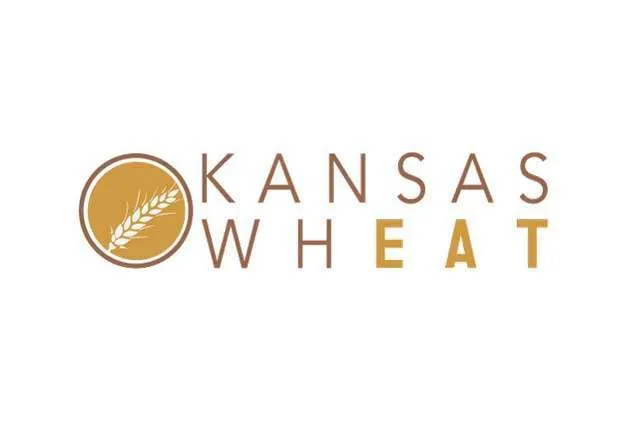Contact: Marsha Boswell, [email protected]
For audio version, visit kansaswheat.org.
It’s a well-known fact that wheat yield and protein have an inverse relationship – the higher the yield, the lower the protein content. But, what if you could have high yields – and high protein quality, too?
Kansas Wheat Rx is a prescription for economical and sustainable production of high-yielding and high-quality wheat. Inaugural seminars in Wichita and Hays on February 8-9, 2022, focused on management practices to maximize yield and quality.
About 150 wheat farmers attended these seminars to hear from researchers at Kansas State University, as well as how to capture value from high-quality wheat from Grain Craft.
Reuben McLean and E.G. Herl, representing Grain Craft, gave an overview of the company, including the Grain Craft Innovation and Quality Lab which is now located in the Kansas Wheat Innovation Center, and their Preferred Variety Program.
When it comes to protein, quantity isn’t always as important as quality. While protein content often changes with new crop wheat, McLean said that bakers want to see consistency in the flour they purchase. Over the past several years, Grain Craft has been bringing in spring wheat from the Northern Plains to increase the protein quality of the flour they mill. Ideally, they would be able to source wheat that meets their customer needs locally. But in a year like 2021, with low protein content in Kansas, they have to blend it with higher protein spring wheat. When they must bring in hard red spring wheat, that subtracts from Kansas’ market share.
Over the past decade, consumers are looking for clean labels on their food, so bakeries are trying to phase out the use of dough additives. The inherent properties of the wheat itself must produce a more consistent product.
Grain Craft said baking quality is very critical and asked, “What can be done on your farms to maximize yield and profitability but also make excellent baking quality?”
Through “Upstream Innovation,” Grain Craft is working closely with breeding programs and farmers to deliver the quality and consistency their customers desire. Grain Craft’s preferred variety list allows them to recommend to seed companies and wheat producers those varieties that meet their end-product quality needs, even during years that may have significant environmental effects. They recognize that 70-80% of wheat is based on environment and management, but the preferred variety program is trying to have a positive effect on 20-30% that is based on genetics. Grain Craft is currently offering a 25 cent premium for these varieties grown with Certified Seed. The Grain Craft preferred variety program is available at graincraft.com/preferred-varieties.
“Our hope with Wheat Rx and the research that Romulo is doing is to take marginal varieties and be able to add an Rx or a prescription of how to manage those varieties to maximize quality,” McLean said.
At the Wheat Rx seminars, K-State researchers presented timely recommendations for variety selection and management practices that help improve these inherent properties of wheat.
K-State Wheat Breeder Allan Fritz said his team is working to increase the protein or functionality in the current wheat gene pool and to find new genes.
He and Dr. Mary Guttieri, USDA-ARS in Manhattan, are doing experiments with wild wheat relatives, especially wild emmer wheat. Wild relatives make good parents and can be crossed to wheat. Some of these lines have proteins that are 2.5 to 3 points above the mean.
Dr. Kelsey Andersen Onofre, K-State plant pathologist, said that in 2021, an estimated 14.4% of Kansas wheat yield was lost to diseases. Stripe rust and other fungal diseases caused the most loss. She said her research shows an average of 7.8% yield increase with fungicide treatments, emphasizing that there are a lot of products available for fungal diseases, and a lot of them work really well.
“It’s not about finding the right product, as much as getting the product on the plant at the right time,” she said. She recommends applying a fungicide at full flag leaf extension to maximize yield.
Dr. Dorivar Ruiz Diaz, K-State professor of agronomy, said research shows yield increases with nitrogen applications. Late application of nitrogen with fungicide applications has a positive effect on grain protein. In addition, sulfur application may show significant yield increase in some conditions. He emphasized the need to soil test every two to four years. Even with high input prices right now, there are opportunities for higher yields and higher protein to improve producers’ return on investment.
Dr. Romulo Lollato, K-State Extension Wheat and Forages Specialist, shared the results of a grower survey of management practices on wheat yield. This research shows that managing fertility and applying fungicides can maximize both wheat yield and protein quality.
The results of these research projects are available to farmers at kswheat.com/wheatrx. More Wheat Rx seminars will be scheduled in future months.
With proper management of wheat, farmers will be able to maximize their profitability, and, at the same time, produce the quality that customers require for their end products.
###
Written by Marsha Boswell, Vice President of Communications for Kansas Wheat




